I pay serious attention to my skin, so I know almost every kind of skin issue that I could have from using bad skin products or neglecting my skincare regimen for a long time. Hives, however, was nothing I ever knew or expected could happen to me. I just realized one day after taking fresh berries and milk that the skin on my arms had grown welts and was red. No quick hives remedy I read online worked until I met with my doctor and he told me about the acupressure points for hives.
Hives are also known as urticaria, and it is a situation where red bumps or welts suddenly break out on your skin. Urticaria is mostly caused by taking foods like nuts, eggs, fresh tomatoes, fresh berries, and milk. For others, hives are a reaction to certain drugs like aspirin, ibuprofen, and anti-inflammatory medications. Hives can happen to anyone, but the chances of it occurring to you are high if you normally have allergies.
Hives could be acute or chronic, but for most people, like me, it was active. This means that it doesn’t last more than six (6) weeks. As disastrous as hives could look on your skin, it’s not a cause for worry. Conventional medicine doesn’t have a proper cure for it, which was why my doctor referred me to acupressure.
So, in this article, I’ll show you the pressure points for hives that you need to know to treat hives whenever it invades your skin.
Does Acupuncture Work For Hives?

Yes, acupuncture treatment works for hives. Acupuncture has been in practice for over 2000 years, and in this period, it has proven to be effective for dermatologic diseases, including urticaria.
Evidence even exists to support the use and effectiveness of acupuncture in treating urticaria. One study confirmed that chronic urticaria is an issue for medical therapy but not for acupuncture. According to the study, there are at least six (6) different kinds of acupuncture treatments for urticaria. However, the study suggests that the best combination of these treatment methods that have proven to be effective over time is the combination of ordinary acupuncture and auricular acupuncture.
Another study carried out randomized control trials on published research papers from January 2008 to October 2018. These papers from popular research databases focused on the use of acupuncture to treat chronic urticaria. This research concluded that acupuncture treatment is more effective than the administration of antihistamine alone in the treatment of chronic urticaria.
Another research focused on the use of acupuncture to treat acute urticaria. The subject of this research was a 26-year-old male nurse who developed acute urticaria while on duty. After a 30-minute administration of acupuncture treatment, the researchers found that acupuncture is an effective treatment of acute urticaria, especially when there are no drugs available to administer the patient.
Acupressure Points For Hives
Acupoint: LU-9 (Other Names: Lung-9/Tai Yuan/Supreme Abyss)
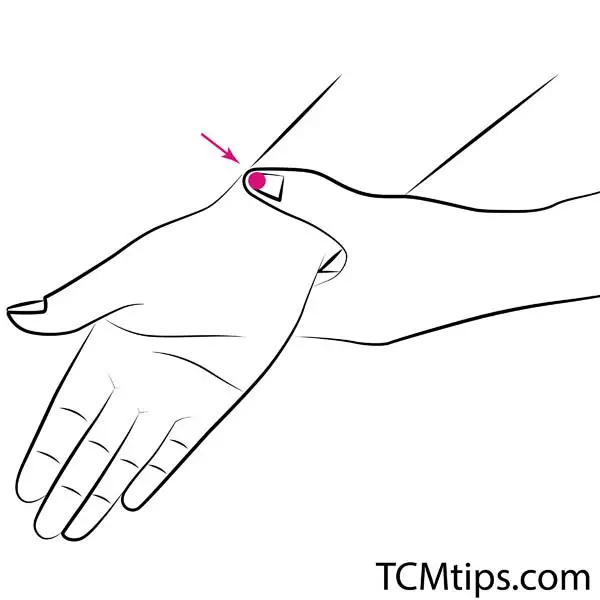
In Traditional Chinese Medicine (TCM), the itching in urticaria is a result of the inability of the body to remove excess heat from the skin’s surface. The remedy to this condition is tied to the lung meridian which helps in the proper functioning of the skin. LU-9 is a lung meridian pressure point, and it is an effective treatment for hives.
This acupoint also referred to as Taiyuan in Chinese, is located on the wrist. You’ll find it above the wrinkles of your wrist, in the depression inside the wrist, just after the ball of your thumb.
Because of its function as a tonifier of the lung Qi and Yin, LU-9 is effective in the treatment of vascular problems such as acrotism, as well as other common issues like headache, cold, wrist pain, and hiccups. It also serves as one of the acupressure points for the lungs.
Acupoint: LI-15 (Other Names: Large Intestine-15/Jian Yu/Shoulder Bone)
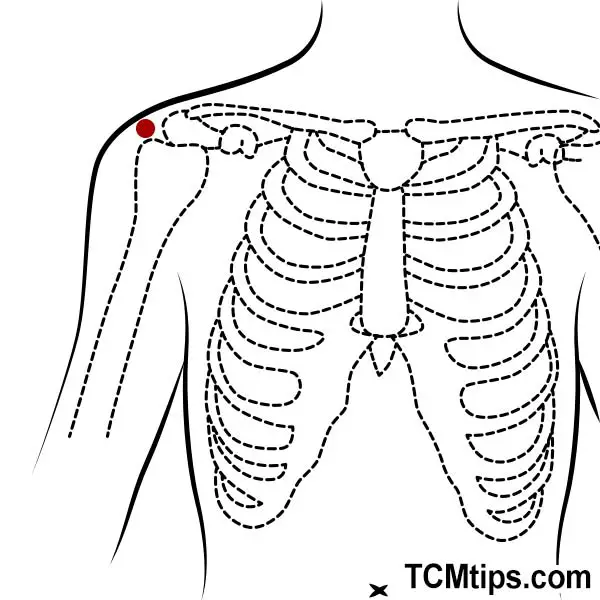
LI-15 is another of the effective pressure points for hives. Like the Lung meridian acupoints, the Large Intestine meridian is also critical in treating urticaria. LI-15 is called Jianyu in Chinese, which means Shoulder Bone. To locate this acupoint, raise one of your arms horizontally, then trace the dent on your shoulder with a finger from the other hand. That dent is LI-15.
Due to its location, LI-15 unlocks a load of benefits for the shoulder, while also functioning as an expeller of damp wind, and an alleviator of pain. This is the reason why it is used clinically in treating paralysis of the upper extremities, in addition to urticaria and rubella.
Acupoint: SP-6 (Other Names: Spleen-6/San Yin Jiao/Three Yin Intersection)
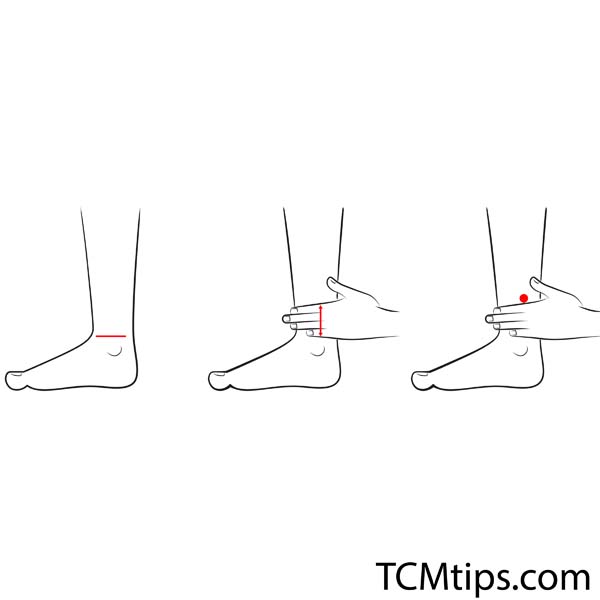
SP-6, Sanyinjiao, or Three Yin Intersection, is a Spleen meridian acupoint that serves as one of the pressure points for hives. This acupoint is located on the lower leg. To easily find SP-6, place four fingers on the lower part of your leg such that your pinky finger is resting on the rise of your ankle. The point in the middle of your leg, where your fourth (index) finger is resting, is SP-6.
In TCM, SP-6 is a versatile pressure point. The reason is that it is a pressure point that crosses the spleen, kidney, and liver meridians. Therefore, its clinical use is almost innumerable. While it serves as a treatment for urticaria, it is also acupressure for circulation in the hands. Clinically, SP-6 is used to treat irregular menstruation, anuria, insomnia, and diarrhea.
Acupoint: LI-14 (Other Names: Large Intestine-14/Bi Nao/Upper Arm)
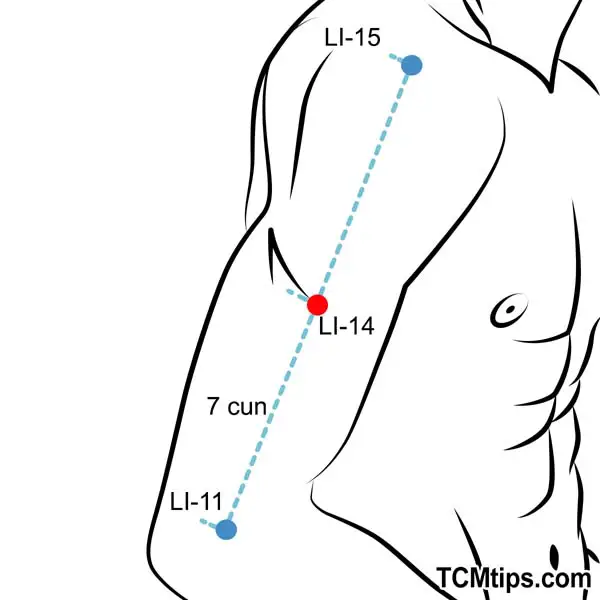
LI-14 is yet another Large Intestine acupoint that serves as one of the pressure points for hives. It is called Binao in Chinese, which means Upper Arm in Chinese. Of course, this means that this pressure point is located at the upper arm. It is the point on the outside of the upper arm where the muscles of the part of the arm join the shoulder slopes to meet the muscles of the biceps.
In TCM, LI-14 is responsible for stopping pain, activating the large intestine meridian, and dissipating the phlegm nodules. This is why it is used in the treatment of shoulder pain, burning pain, redness on the skin, as well as one of the acupressure points for neck and shoulder tension.
Acupoint: LI-11 (Other Names: Large Intestine-11/Qu Chi/Pool at the Crook)
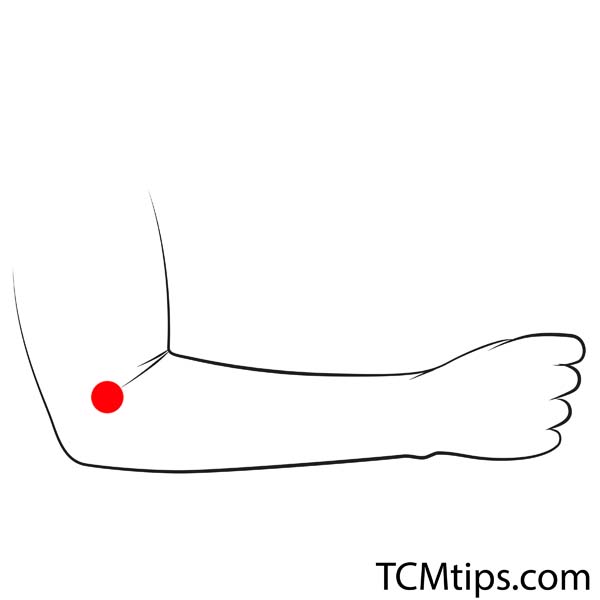
Yet another Large Intestine meridian acupoint for treating urticaria is LI-11. LI-11 is called Quchi in Chinese, and this means Pool at the Crook in English. This acupoint is located on the elbow. To find it, all you have to do is bend your arm. The point at the end of the crease that forms when you bend your elbow is LI-11.
In TCM, LI-11 is responsible for clearing heat, cooling blood, stopping itching, and expelling exterior wind. This makes this pressure point effective for treating itching problems. LI-11 is thus effective in treating all febrile diseases, sore throat, eczema, abdominal pain, and even malaria. It is also one of the acupressure points for fever and headache.
Although stimulating LI-11 will hurt, to unlock its benefit for hives, you have to keep pushing it hard for a long time.

Try our Anti-Aging Gua Sha Tool designed to bring out your skin’s natural glow.
Best Gua Sha Product- Anti-Aging: The tool is designed to target 11 specific aging signs such as wrinkles and sagging skin. By following the 7-step routine, users can improve skin firmness and reduce fine lines naturally.
- Enhances Skincare Routine: It works effectively with serums and lotions, boosting absorption and efficacy of skincare products.
- Visible Skin Improvement: Users can expect a smoother complexion, reduced puffiness, and a more youthful appearance.
 P. Sze
P. Sze 

















